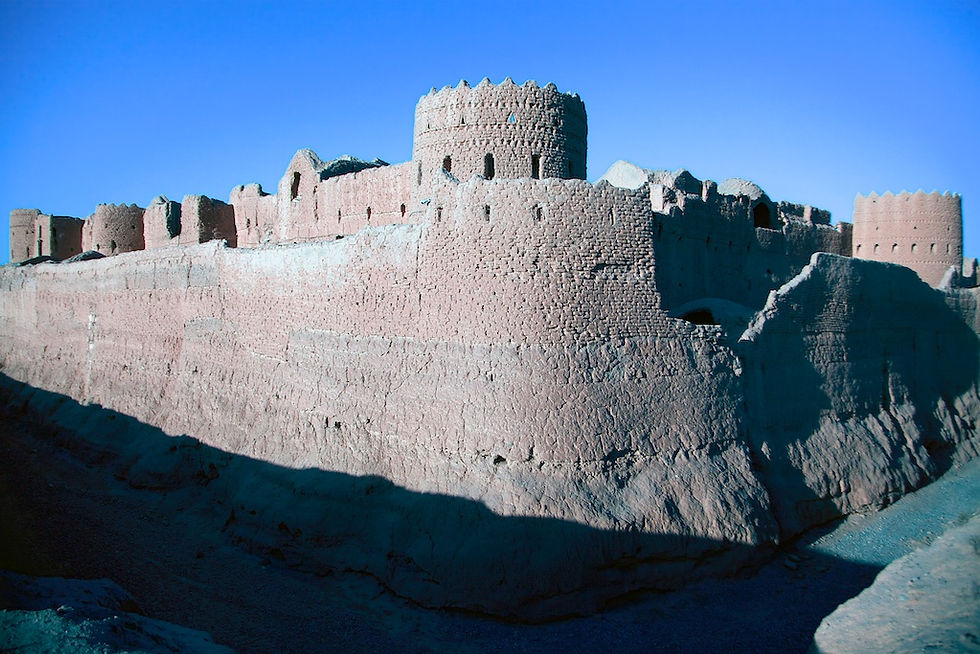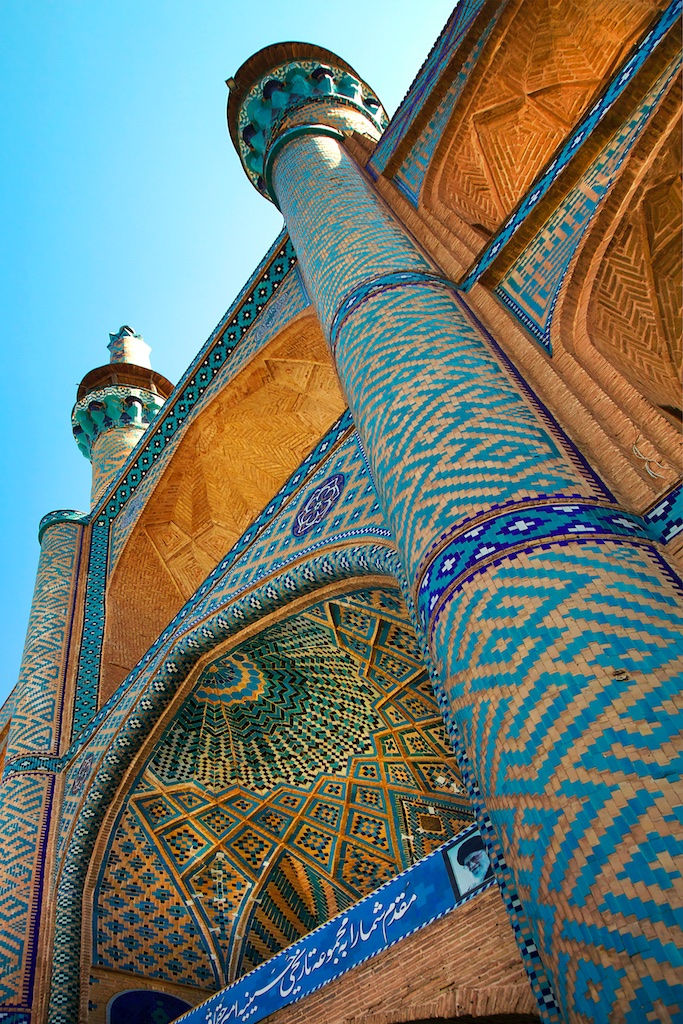First Town on Earth: Yazd, Iran
- edgardavidboshart
- Jan 19, 2018
- 5 min read
[Note: there are over 80 images in this blog. The photos include some of the finest examples of Persian architecture in central Asia]






Tour promoters might lead you to think so, but Iran’s southern city of Yazd actually could not be the first town established by human beings. There are many cities vying for this distinction around the world. However, to be honest, Yazd isn’t a bad place to start if you want to trace civilization from its earlier pastoral bartering habits through the era of community-building using wayside rest areas (called caravansarais) and specific trade routes via harsh overland paths and primitive Gulf seaports. Great Chinese, Indian and Persian tribal conferences turned themselves into empires, with the help of charismatic, but often pragmatically brutal, rulers and servant armies. Unlike nearby population centers like Persepolis, though, it seems Yazd was a peaceful place that avoided most of the tumult of Iranian history.






A citadel just a short distance outside of Yazd, in Saryazd, housed under lock and key in ancient times the wealth collected by early citizens of the rural desert region here. Supposedly, everything from cereals and money to gold and gems were stashed in vaults during the various incursions of invaders crossing this desert over the past 2,000 years or so. The nested concentric walls and high towers surrounded by a moat made this lonely mud-brick castle virtually impregnable. Valuables could be bricked up or locked behind wooden doors in almost 500 cubicles to avoid detection. To me, the fortress suggested a reliable model for most caravansarais that serviced merchants on the Silk Roads. Less than 500 residents live now in the small village at the foot of the fort; likely about the same number as in ancient times. I wondered as I circled the exterior of the outer wall and then an inner wall what stories are hidden here and whether corruption had ever siphoned off the treasures once housed here. Delightedly, few tourists or people of any persuasion visit this outlier fortress at any given time. Its meager staff make reasonable companions for conversation over cups of tea as the sun sinks below the horizon leaving the dark passages within the walls even darker and more mysterious.









Yazd means “God.” If Adam and Eve took up residence here, they would have feasted on pomegranates rather than the infamous apples. The historical district of Yazd, a large swath of the city, was designated a World Heritage Site by UNESCO in 2017. Because of generations of adaptations to its desert surroundings, Yazd has a unique Persian architecture. It is also nicknamed the "City of Windcatchers" (شهر بادگیرها Shahr-e Badgirha), referring again to those ubiquitous vents funneling air downward to air condition the interiors of the region’s major buildings.






It is also very well known for its Persian handicrafts, handwoven cloth, silk-weaving, ceramics, plus Persian cotton candy and other noted confectioneries.



In 1272 this city-town was visited by Marco Polo, who remarked on the fine silk-weaving. In the book The Travels of Marco Polo, he described Yazd as a “good and noble city,” and a place with “a great amount of trade.” He reported, “They weave there quantities of a certain silk tissue known as Yasdi, which merchants carry into many quarters to dispose of. When you leave this city to travel further, you ride for seven days over great plains, finding harbour to receive you at three places only. … At the end of those seven marches over the plain, you come to a fine kingdom which is called Kerman.” Kerman is further south. I did not go that far on my journey.




Confectioners called khalifehs keep their recipes secret, and there are many that have remained a private family business for generations. Popular sweets made in the city include baklava, ghotab and pashmak.


The surrounding area also maintains Zoroastrian fire temples, ice chambers and cisterns, and those underground water-bearing channels called qanats (which I mentioned before).






One central mosque of Yazd is a relic of the Safavid period constructed in the year 841 A.H. (14th century A.D.) by Amir Chakhmaq Shami and his spouse Fatimeh Khatoon (Seti Bibi). It is a startling soaring landmark that celebrates the blue and turquoise tapestry of colors that so-infatuate many Persian artists. I should mention that "A.H." is for "after hegira," a journey that Muslims believe the Prophet Mohammed took from Mecca to Medina in 622 A.D. The Islamic calendar, which follows a lunar cycle, begins at year 1 A.H.





On the threshold of the Chakhmaq mosque, is a carved inscription in the Naskh script, and on the eastern entrance is a tiled epigraph with the Tholths scrip. Cuneiform or Kufic script are also associated with this building. It is notable that Persian script is a rich calligraphy in variety and beauty and is part of many masterpieces of art in central Asia, particularly miniature painting. When I arrived at the sprawling public square, on the right I noticed preparations underway for the Muharram. A large black cloth was being draped over a large wooden palm leaf-shaped structure that would be carried by up to 70 young men during the peak of the somber Shia Ashura commemorations.

Elsewhere in this town is the archaic and immensely valuable Kabir Jame’ Mosque of Iran. This pillar reaching heaven is even more famous than the Chakhmaq mosque, and displays an unmatched collaboration of shimmering blue and turquoise and tiles and plasterwork. Its minarets are the tallest in Iran. To me, the relatively narrow tall facade suggested a moment of inspiration, but passing through the entrance I was greeted by an equally grand entrance and serene interior holy place that makes the complex a glorious masterpiece and an important remnant of Yazd history.












The layout of the Jame’ shrine to God represents what is referred to a Azeri Persian art. A Persian historian and archeologist, Arthur Pope, probably best described Persian architecture this way: “There are no trivial buildings; even garden pavilions have nobility and dignity, and the humblest caravanserais generally have charm. In expressiveness and communicativity, most Persian buildings are lucid — even eloquent. The combination of intensity and simplicity of form provides immediacy, while ornament and, often, subtle proportions reward sustained observation.” Arthur Upham Pope, Persian Architecture. George Braziller, New York, 1965. p.10











I concur, and found that “sustained observation”is very important to fully appreciate the cosmic symbols and stories by which men and women are “brought into communication and participation with the powers of heaven”. Nader Ardalan and Laleh Bakhtiar. Sense of Unity; The Sufi Tradition in Persian Architecture. 2000.










(to be continued)

Comments